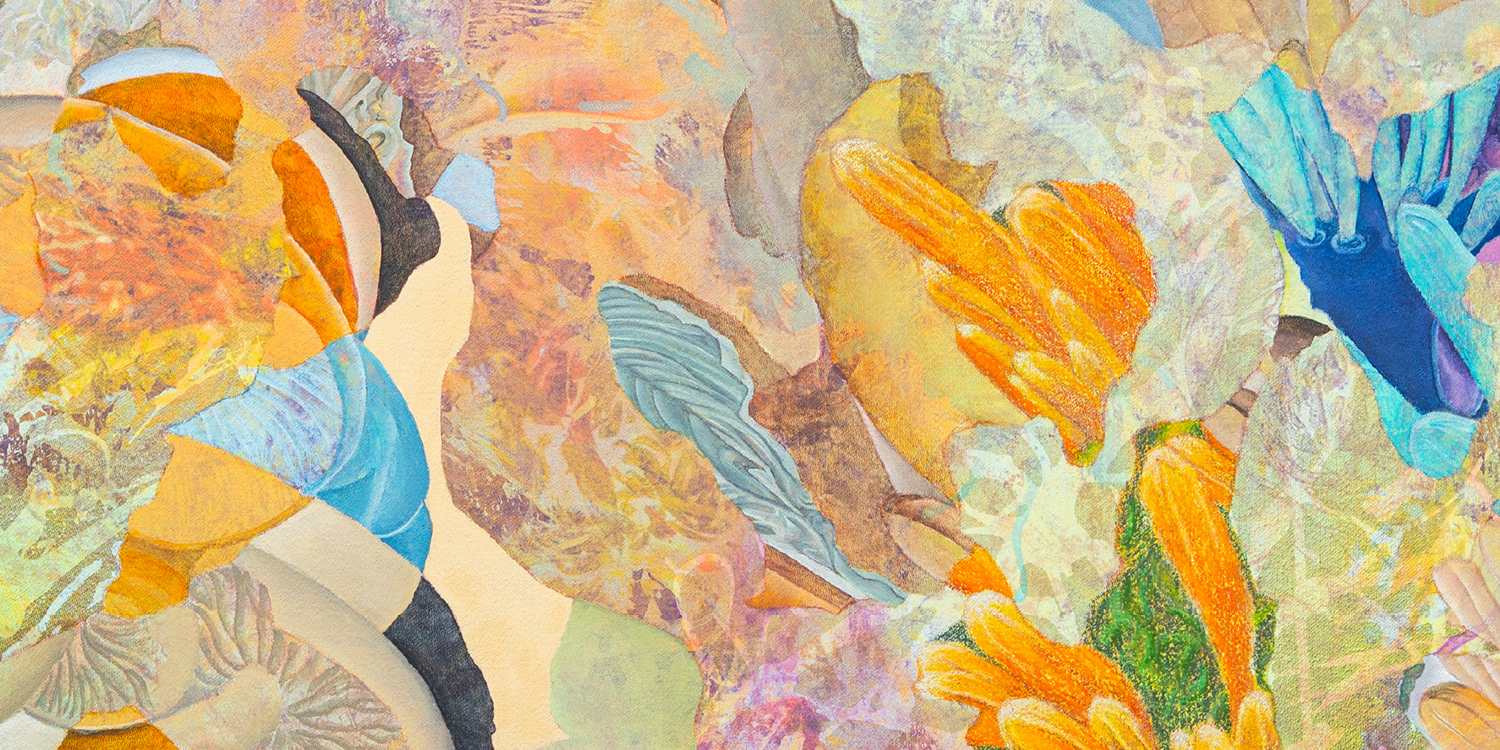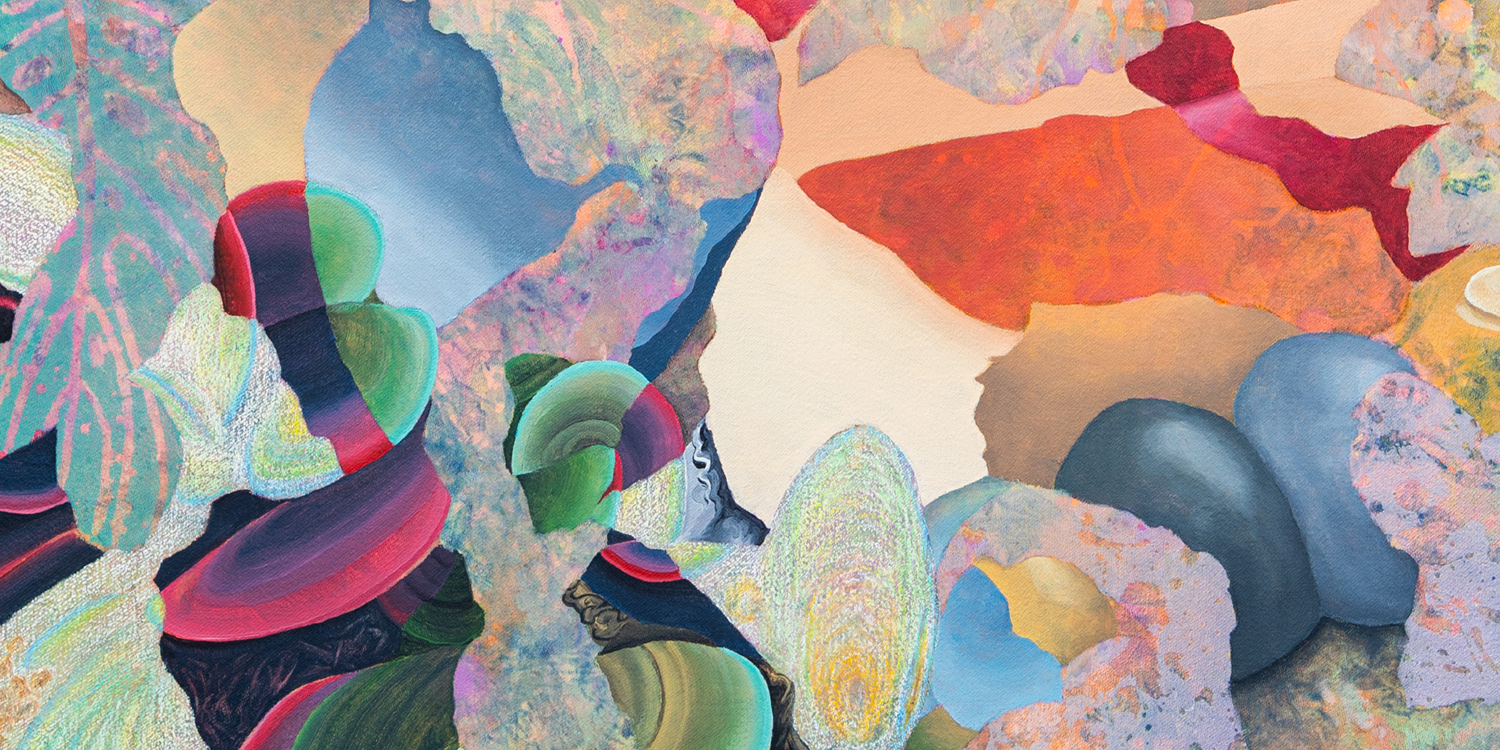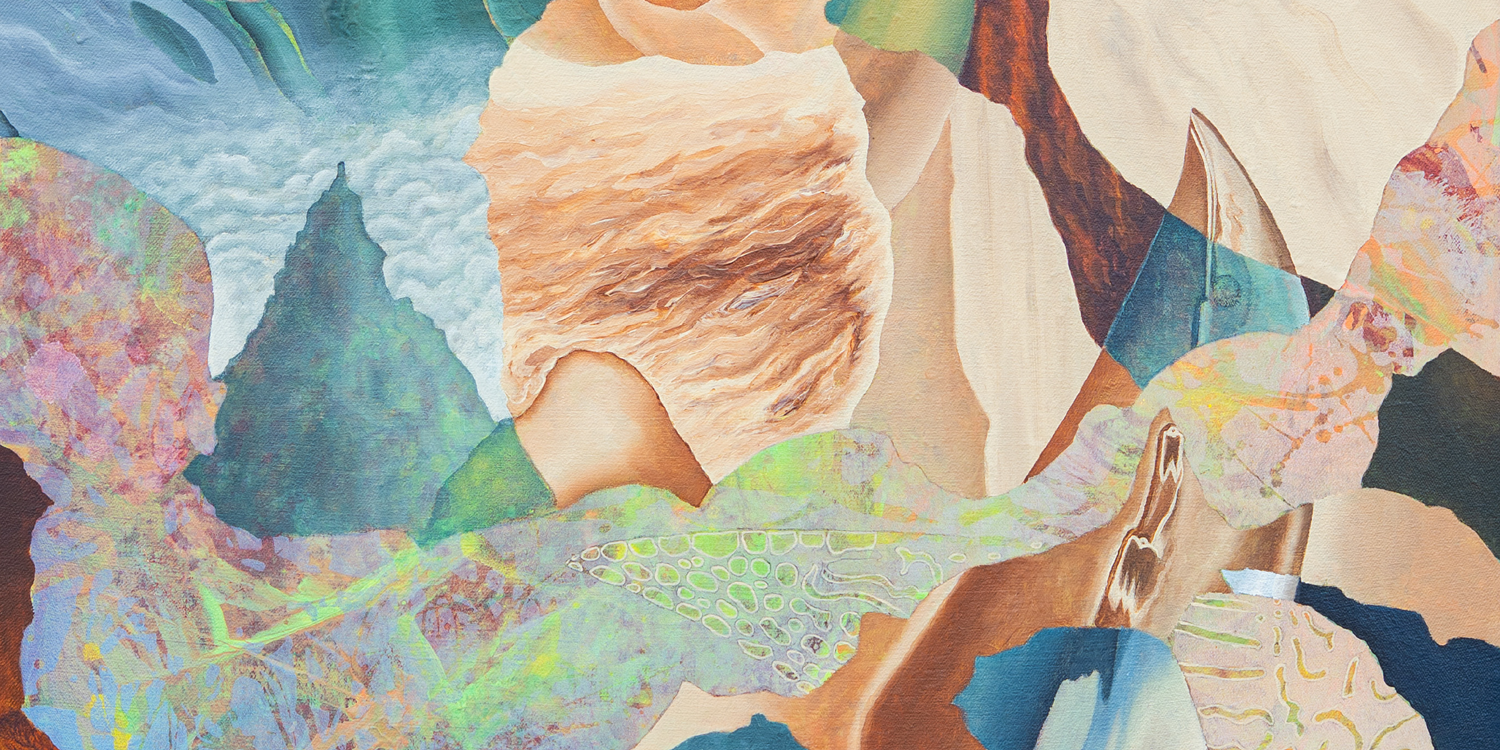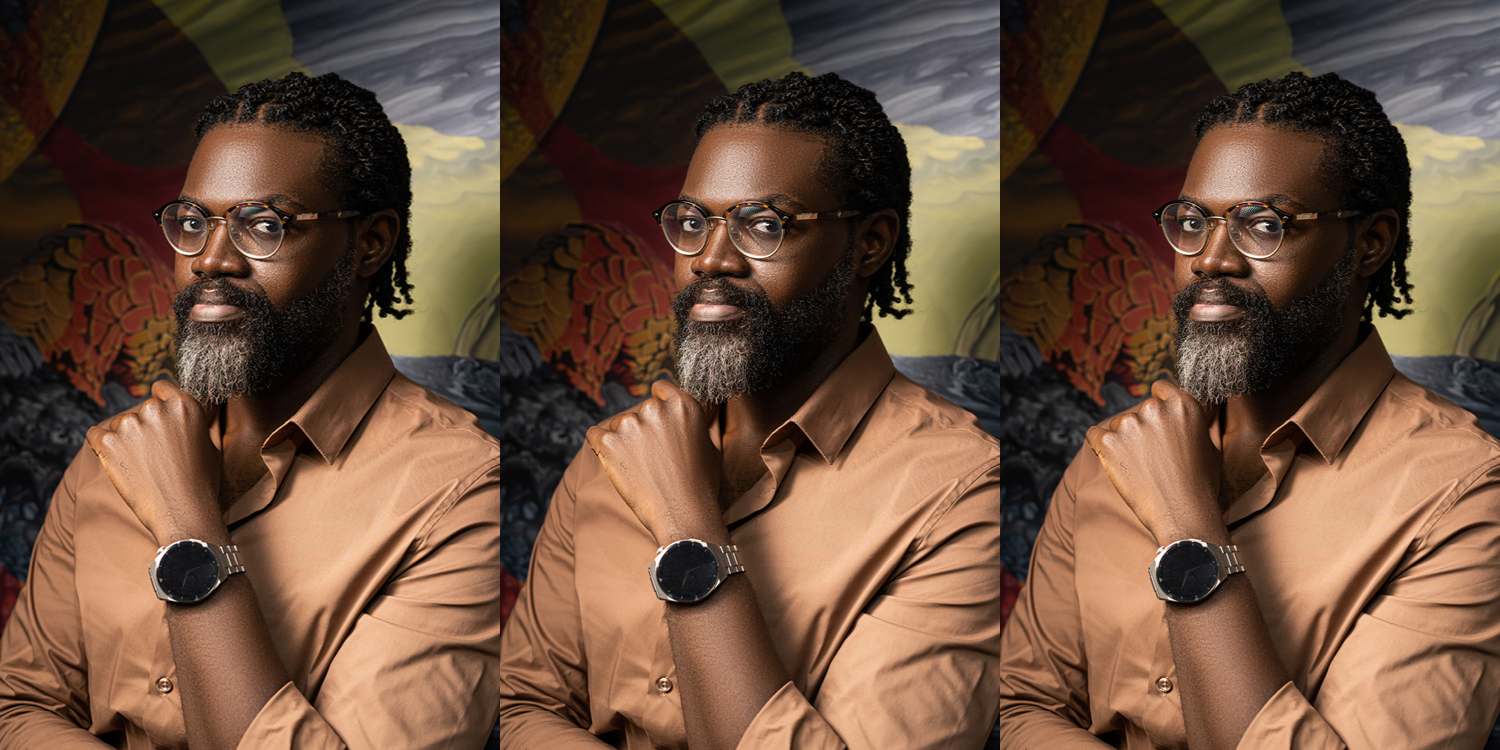Earlier this month, we welcomed Kwadwo A. Asiedu, a Lagos-based Ghanaian-Mexican painter and photographer, to the G.A.S. Farm House in Ikiṣẹ. Raised within the grounds of the International Institute of Tropical Agriculture (IITA), home to one of West Africa’s largest preserved rainforests, Kwadwo’s early life was deeply attuned to the natural world. This foundation informs a visual practice rooted in abstracted landscapes and a sustained inquiry into humanity’s complex relationship with nature. Through his use of elemental forms, he interrogates the dissonance between human ambition and ecological reality, exploring themes of permanence and impermanence while seeking to reframe our relationship with nature toward reverence, humility, and stewardship.
During his eight-week residency, Kwadwo hopes to immerse himself in the rural and unique environment of the Farm House. He plans to create new paintings that respond to the surrounding landscape and to develop layered abstractions that engage the land not only visually, but also emotionally and conceptually. He also hopes to utilise this time for focused studio practice and reflection, experimenting with scale, composition, and materiality while deepening his ongoing dialogue with nature.
 Of the Rising Light, 2025, acrylic on canvas, 36×24 in. Image courtesy of Jochi_Photography
Of the Rising Light, 2025, acrylic on canvas, 36×24 in. Image courtesy of Jochi_Photography
What is the current focus of your creative practice?
My practice is a continuous dialogue with nature—one where I do not seek to impose, but to listen, observe, and translate. Rooted in abstracted landscapes and elemental forms, my work interrogates the dissonance between human ambition and ecological reality. I draw inspiration from the complexity of ecosystems, from the resilience of flora and fauna to the quiet, persistent forces that shape the natural world over time.
My work engages the existential dualism of permanence and impermanence—highlighting nature’s ability to endure against the backdrop of human ephemerality. Through layered abstraction, altered scale, and a meditative process, I aim to evoke both the sublimity and the precarity of the living world. At its core, my practice seeks to dismantle the exploitative view of nature as subservient. Instead, it calls for a reorientation—toward reverence, humility, and stewardship. In doing so, I hope to nurture a visual ecology that resists erasure, affirms interconnectedness, and imagines more sustainable ways of coexisting with the Earth.
 Near Bloom, 2025, acrylic on canvas, 36x24 in. Image courtesy of Jochi_Photography.
Near Bloom, 2025, acrylic on canvas, 36x24 in. Image courtesy of Jochi_Photography.
What drew you to apply for this residency and how do you think it will inform your wider practice?
The G.A.S. Farm House residency presents a rare and deeply personal opportunity to return to the kind of environment that first shaped my understanding of nature and continues to anchor my artistic practice. Before becoming an artist, I lived and worked at the International Institute of Tropical Agriculture (IITA) in Ibadan, an experience that instilled in me an enduring reverence for the living environment and its quiet, complex systems. Returning to a similar setting, not far from that formative environment, feels both timely and essential. My work is grounded in abstracted landscapes and elemental forms that explore humanity’s fragmented relationship with nature.
 Echoes of the Unwritten, acrylic on canvas, 36×24 in. Image courtesy of Jochi_Photography.
Echoes of the Unwritten, acrylic on canvas, 36×24 in. Image courtesy of Jochi_Photography.
Can you give us an insight into how you hope to use the opportunity?
During the residency, I would focus on deep observation, listening to the land, absorbing its rhythms, and allowing it to guide my creative process. The environment of G.A.S. Farm House, with its diversity of crops and organic cycles, offers rich material for reflection and inspiration. I would spend time walking the land, and documenting it that would later be incorporated into a continuing body of work. Rather than approaching the residency with a fixed outcome, I see it as a period of recalibration, an opportunity to shift from the noise of the city into a space of quiet ecological intimacy. I would use the time to gather textures, colours, and stories from the farm and its surroundings, integrating them into new visual forms that speak to the interdependence between humans and the land. The aim is not simply to represent nature, but to allow its presence to shape the work from within.
This period would also support the evolution of my broader practice toward more site-responsive, ecologically engaged work. The residency offers an ideal setting to think more expansively about sustainability not just as a theme but as a method: in process, material choice, and conceptual intent. The studio spaces, proximity to traditional craft practices, and access to natural materials would allow me to explore new techniques and textures, possibly experimenting with natural pigments or incorporating soil and organic matter into my visual language.
About Kwadwo A. Asiedu
Kwadwo A. Asiedu (b. 1987) is a self-taught Ghanaian artist and photographer, born in Mexico and currently based in Lagos, Nigeria. He holds a Master's degree in Environmental Management from the University of Hertfordshire, England. Raised within the grounds of an agricultural institute, The International Institute of Tropical Agriculture (IITA), home to one of West Africa’s largest preserved secondary rainforests, Asiedu's early life was deeply intertwined with nature's rhythms and intricacies. This upbringing fostered a lifelong reverence for the living world and a visual practice rooted in abstracted landscapes. Drawing on elements of flora, fauna, and ecology, Asiedu's work investigates humanity’s fragmented relationship with nature. His artistic approach positions him not as a creator, but as a conduit—translating nature’s emotive force into visual forms that critique, honour, and reimagine our place within the Earth’s ecosystems.
 Photo of Kwadwo A. Asiedu. Image courtesy of Jochi_Photograph.
Photo of Kwadwo A. Asiedu. Image courtesy of Jochi_Photograph.